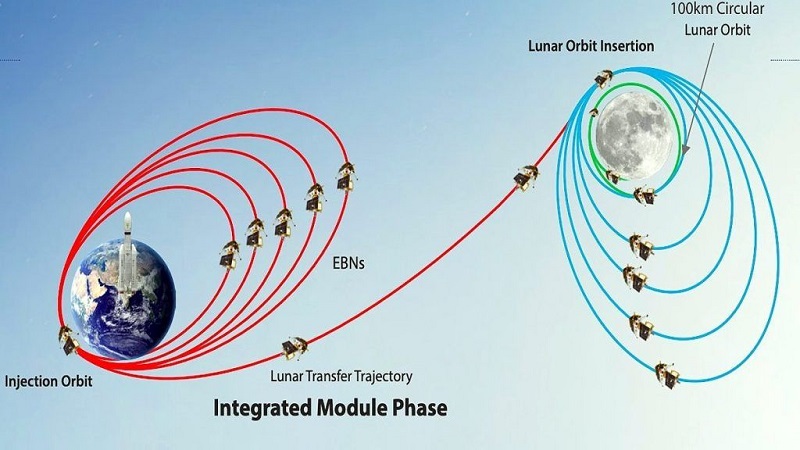
India’s third Lunar spacecraft, Chandrayaan-3, is ready to leave its orbit around Earth after spending 17 days in space. To set its course for the Moon, the spacecraft will perform a Trans-Lunar Injection (TLI) by firing its engines for around 20 minutes. This critical maneuver is scheduled to take place on the intervening night of July 31st and August 1st, between midnight and 1:00 am (IST).
During its orbit around Earth, Chandrayaan-3 executed five engine firings as per commands from ISRO’s tracking, telemetry, and command facility (ISTRAC). With each firing, the spacecraft propelled itself into a higher orbit, moving farther away from Earth.
ISRO has been using the Slingshot method, scientifically known as Hohmann Transfer Orbits, to send its spacecraft to far-off destinations like the Moon and Mars. This energy-efficient technique is employed due to the limited lifting power of India’s LVM3 rocket compared to super-heavy rockets like America’s Space Launch System. The current method takes more than a month to reach the Moon, but with heavier rockets, it could be achieved in less than a week, enabling the deployment of more capable spacecraft.
After the TLI burn, the craft will take approximately five days to reach a predetermined point in space where the Moon will also be located. At this ideal time and location, the spacecraft will be captured by the Moon’s gravity and begin orbiting it.
The Lunar craft will then de-boost itself during the ideal time and day to gradually approach the Moon’s surface, preparing for a lunar landing. The landing is scheduled for August 23 at 5:47 pm (IST) near the Lunar south pole at approximately 80 degrees latitude.
The ‘Vikram’ lander, with a mission life of one Lunar day (14 Earth days), must touch down on the Lunar surface at the start of the Lunar day to utilize available sunlight for its science payloads, sensors, and data communication to Earth. The mission aims to land a few hundred kilometers away from the Lunar south pole, an unexplored region that holds potential for unraveling many mysteries of the Moon. This area has been relatively untouched due to its limited sunlight illumination, making in-situ probing crucial for scientific research.

Post Your Comments